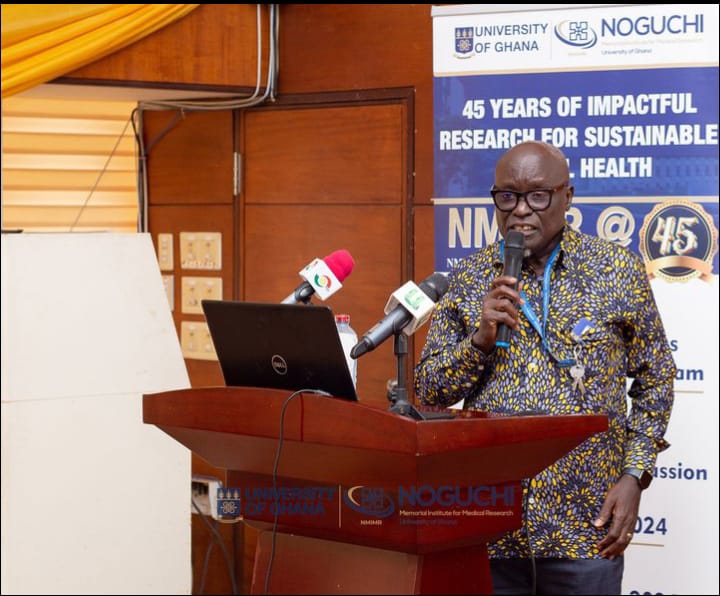A leading figure in the global Rotavirus research, Professor George Enyimah Armah has delivered an insightful presentation during the lecture session of the Annual Research Meeting of the Noguchi Memorial Institute for Medical Research, held as part of their 45th Anniversary celebration.
Speaking as the Head of the West African WHO Regional Rotavirus Reference Laboratory at Noguchi, Professor Armah highlighted the immense contributions of Rotavirus vaccine research in reducing child mortality in Ghana and across Africa.
Rotavirus is known as a major cause of severe diarrhea among infants and young children, particularly in low- and middle-income countries, contributing significantly to childhood deaths. However, thanks to research led by experts like Professor Armah, significant strides have been made in combating this virus, especially through the introduction and widespread use of the rotavirus vaccine.
In the 1990s, diarrhea was a major health concern, with high mortality rates, particularly in sub-Saharan Africa.
At the time, Ghana’s diagnostic capabilities were limited, with only a focus on bacterial causes, leaving viral infections like Rotavirus largely undetected. Professor Armah recalled how Noguchi Memorial Institute was one of the few places in Ghana equipped to conduct bacterial cultures, making it inadequate to fully diagnose and address the underlying causes of severe diarrhea.
“So, during the 1990s, diarrhea was a big issue and part of the mortality of children and as the Director rightly said, the diagnosis for diarrhea was mainly based on, bacteria and it was about culture. Nobody thought about viruses.”
“You can imagine, Noguchi was probably the only one in Ghana at that time who could do any culture. So the whole of Ghana, we only had Noguchi trying to look at that so it was inadequate and then also, sub-Saharan Africa was the one area that was very much affected with two-thirds of all the mortalities were in developing countries.”
This alarming statistic urged him to focus on understanding rotaviruses and their impact on child health even though Ghana was not among the countries with the highest mortality rates.
“As a young scientist, I was a bit concerned. I was only lucky that our country was not part of the top five in the world. And I am telling you that each day, about 260 children under five in Africa die just from diarrhea. In the buses that we take to Kumasi, it takes 40 and we have 260 dying. So, we are looking at about 50-plus busload of kids dying every day. And it was very, very worrying.”
He stated that, one of the motivations in his research journey was the introduction of an electron microscope, a vital tool in virological diagnosis, at Noguchi.
This enabled Professor Armah and his team to identify rotavirus as a leading cause of diarrhea in Ghanaian children, contributing to the understanding of pediatric diarrheal diseases across Africa.
“One of the things that really pushed me on, was the fact that we had an electron microscope and I think at the time, Virology was a subject that was just coming up. The building tool for virological diagnosis was the electron microscope so I had this big microscope as a toy. I would say as a toy because any time I sat by it, I never stopped. There were times when I got out of the electron microscope room, the whole place was dark and quiet. When I look at my watch, it was 2 am. So I had to come back and work. And then seeing the electron microscope, the Rotavirus for the first time, was really fascinating.”
Professor Armah’s research continues to assess the effectiveness of these vaccines, with the goal of further reducing child mortality rates.
–
Story by: Joycelyn Glory | univers.ug.edu.gh





